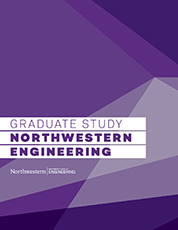The Brand and Design Connection
Rick Hoobler discusses the EDI class he teaches and how his own career experiences demonstrate the way the important link develops between a company and its creations.
Rick Hoobler wasn’t a professional product designer when he had one of his biggest successes in product development.
Long before he served as vice president of design at iRobot or global user experience design director for Motorola, Hoobler just wanted to give some campers an experience they wouldn't forget.
And did he ever.
 Hoobler was working for a Pittsburgh-based group developing a camp experience in Michigan, and he was tasked with creating the fun for the campers. The highlight of the week had historically been a huge capture-the-flag event in a valley by Lake Michigan surrounded by sand dunes, where onlookers could stand and launch water balloons down at the competitors.
Hoobler was working for a Pittsburgh-based group developing a camp experience in Michigan, and he was tasked with creating the fun for the campers. The highlight of the week had historically been a huge capture-the-flag event in a valley by Lake Michigan surrounded by sand dunes, where onlookers could stand and launch water balloons down at the competitors.
Hoobler’s idea? Move the event to the dead of night.
“It's darker than you can imagine up there,” he said. “So we had a camp of 500 people, and each team had its own color glow necklace. My friend and I were up high on the dunes with a generator and a sound system and lights just blasting out Star Wars music watching 500 light rings run around, playing a four-way capture-the-flag game. It was the most incredible thing.”
So incredible that the camp’s brand became solidly connected with the design of that event. Campers knew if they came to that camp, they were going to have fun, and it was going to involve a unique game of capture the flag.
“I've launched lots of products since then,” Hoobler said, “but I always go back to that as the most impactful, low budget, incredible experience.”
Today, Hoobler teaches Brand and Design Leadership in Northwestern's Master of Science in Engineering Design Innovation (EDI) program, where he emphasizes the inexorable connection between a brand and the products it designs.
"The products that you make are your brand," Hoobler said. "There's no real separate marketing job to be done. You can't separate your brand away from your products, and a lot of companies behave that way. Ultimately, you're being judged by your consumers on your product, and if your brand and your product aren't aligned, that's a real problem."
Hoobler also stresses to students how difficult it is to create a strongly branded product and keep that product going for an extended amount of time.
He conveys these lessons by sharing his own professional experiences — tales from his design career, complete with self-deprecating stories of ideas that weren’t exactly successes. Rather than lecture about old business cases, Hoobler believes his approach helps students learn how to more successfully connect design with brand and brand with design.
Moving forward, he will have new stories to reflect on. He recently was named vice president of experience design at Cerence, a provider of automotive assistants that create intelligent, flexible, and intuitive in-car experiences for top automakers. In his role, he leads designers and researchers to create artificial intelligence powered experiences between people and vehicles, "experiences that help people be more productive, provide more immersive entertainment, while keeping them safer than ever," he said.
In addition to his teaching role, Hoobler serves on the EDI Advisory Board, where he helps ensure the program is preparing students to be difference-makers in a rapidly evolving field.
Since first being introduced to EDI, he's been impressed.
“The quality of the students is quite high,” he said. “You can see some of them staying in engineering and being really good, empathetic user-centered engineers and some people crossing that over into design careers. It's a cool mix. It seems to me like they're all well on the way to doing good things.”

